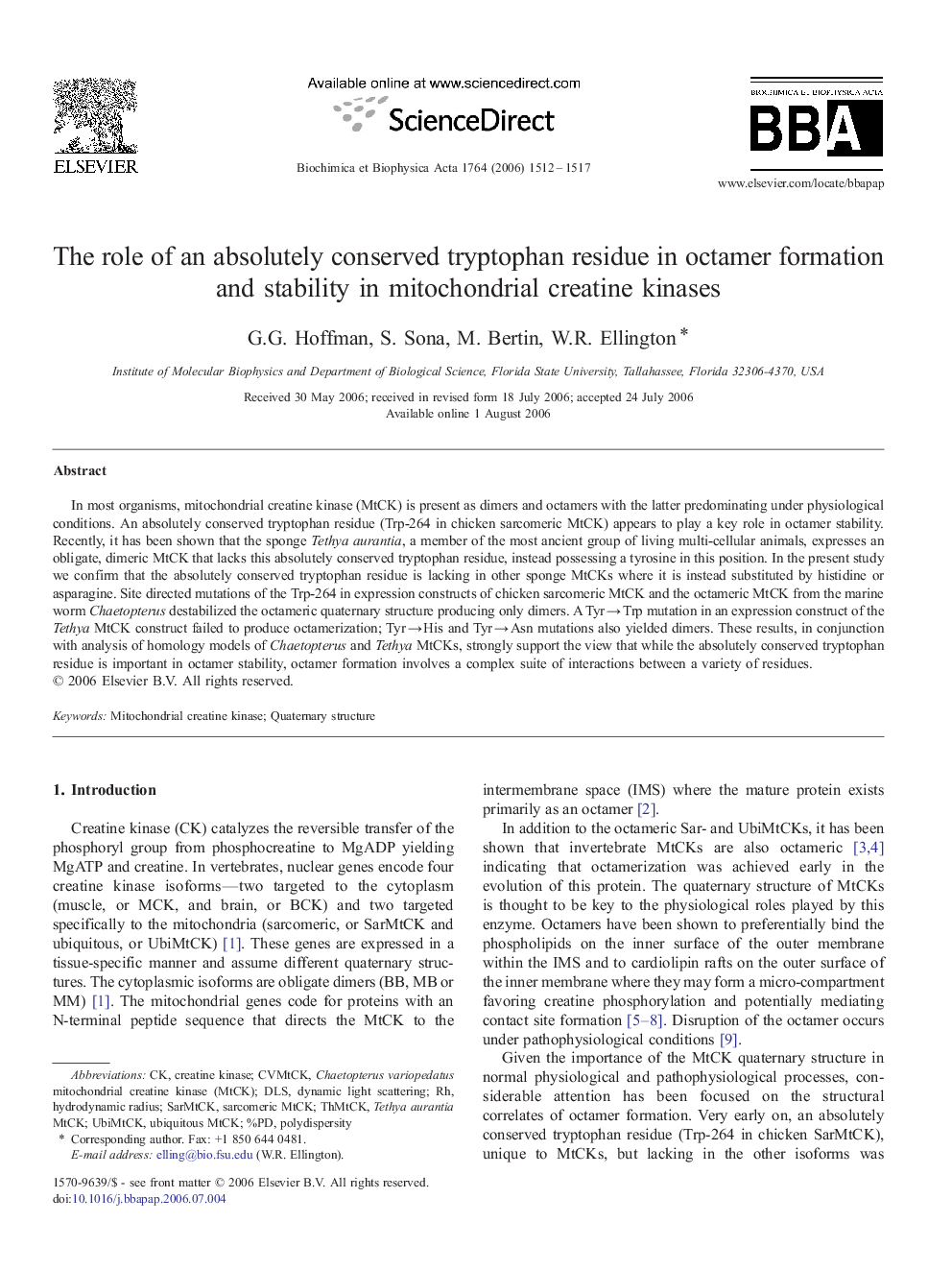| Article ID | Journal | Published Year | Pages | File Type |
|---|---|---|---|---|
| 1179484 | Biochimica et Biophysica Acta (BBA) - Proteins and Proteomics | 2006 | 6 Pages |
In most organisms, mitochondrial creatine kinase (MtCK) is present as dimers and octamers with the latter predominating under physiological conditions. An absolutely conserved tryptophan residue (Trp-264 in chicken sarcomeric MtCK) appears to play a key role in octamer stability. Recently, it has been shown that the sponge Tethya aurantia, a member of the most ancient group of living multi-cellular animals, expresses an obligate, dimeric MtCK that lacks this absolutely conserved tryptophan residue, instead possessing a tyrosine in this position. In the present study we confirm that the absolutely conserved tryptophan residue is lacking in other sponge MtCKs where it is instead substituted by histidine or asparagine. Site directed mutations of the Trp-264 in expression constructs of chicken sarcomeric MtCK and the octameric MtCK from the marine worm Chaetopterus destabilized the octameric quaternary structure producing only dimers. A Tyr → Trp mutation in an expression construct of the Tethya MtCK construct failed to produce octamerization; Tyr → His and Tyr → Asn mutations also yielded dimers. These results, in conjunction with analysis of homology models of Chaetopterus and Tethya MtCKs, strongly support the view that while the absolutely conserved tryptophan residue is important in octamer stability, octamer formation involves a complex suite of interactions between a variety of residues.
